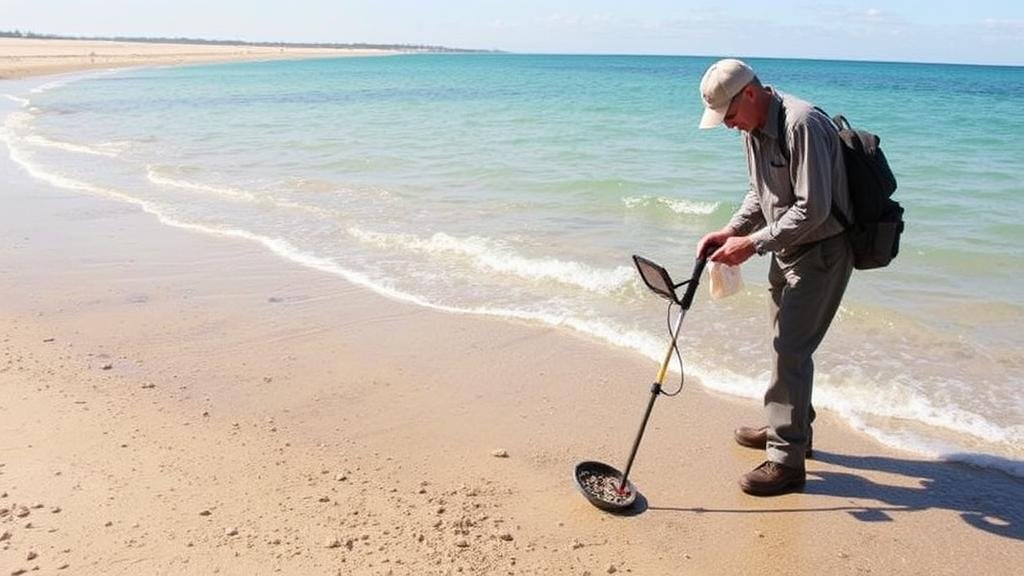Techniques for Metal Detecting in Saltwater Beaches and Submerged Areas
Techniques for Metal Detecting in Saltwater Beaches and Submerged Areas
Metal detecting in saltwater environments, such as beaches and submerged areas, requires specific techniques due to the unique challenges posed by saline conditions, mineralization, and varying water levels. This article explores effective strategies, tools, and techniques to optimize your metal detecting experience in these environments, providing insights that combine both scholarly knowledge and practical application.
Understanding the Challenges of Saltwater Metal Detecting
Saltwater environments present several challenges for metal detectors, primarily due to their mineral content and interference with detector performance. Saltwater has a higher conductivity than freshwater, which can lead to false signals and excessive noise. Also, the presence of black sand and mineralized soil can complicate detection further.
- Saltwater Conductivity: The electrical conductivity in saltwater can lead to a phenomenon known as ground balancing, which is crucial for accurate readings.
- Mineralization: Mineral-rich soils can create signals that are difficult to distinguish from actual targets, demanding more advanced settings and detector capabilities.
Choosing the Right Equipment
Not all metal detectors are created equal, especially when it comes to saltwater applications. It is essential to select a detector designed specifically for challenges posed by saltwater and mineralized environments.
- Waterproof Units: Select a detector rated IP68 or higher for full submersion. Popular models include the Minelab Excalibur II and the Garrett AT Pro.
- VLF vs. PI Technology: Very Low Frequency (VLF) detectors are excellent for wet sand but struggle in deeper saltwater. Pulse Induction (PI) detectors, on the other hand, can penetrate deeper and handle mineralization better, making them ideal for submerged areas.
Techniques for Effective Metal Detecting in Saltwater
Proficiency in metal detecting in saltwater comes down to employing the right techniques. The following methods enhance target detection while minimizing noise and false signals, allowing detectorists to maximize their findings.
1. Adjusting the Ground Balance
The significance of adjusting ground balance cannot be overstated. Proper ground balancing can help eliminate the interference caused by mineralization in the beach sand and saltwater.
- Manual vs. Automatic Ground Balance: Many advanced models provide the ability to manually tune the ground balance. For example, the Fisher CZ-21 allows manual adjustment to overcome ground mineralization.
- Conducting Ground Balancing: Start by holding your detector above the ground, then adjust until the target signal is neutralized; this will enhance your ability to discern actual targets.
2. Choosing the Right Timing
Timing can significantly impact your success at metal detecting in saltwater environments. The best times for hunting include:
- Low Tide: During low tide, more dry sand and submerged areas become exposed, presenting a prime opportunity to scan for treasures.
- After Storms: Ocean movements during storms can shift sand, exposing buried items; detectors can take advantage of these conditions for increased finds.
3. Employing Proper Techniques and Methods
Effective sweeping techniques can greatly increase your chances of finding valuable items when metal detecting. Consider the following approaches:
- Sweeping Technique: Use a slow, methodical side-to-side sweeping motion, overlapping each pass to ensure thorough coverage. The optimal speed is approximately 2-3 inches per second.
- Compact Target Identification: Pay attention to small or compact targets using a pinpointer after locating larger signals. Employing tools like the Garrett Pro-Pointer can save time and increase accuracy.
Case Studies and Real-World Applications
Numerous collectors have successfully utilized these techniques to unearth valuable finds. For example, divers in Florida reported recovering jewelry and coins using PI detectors such as the Minelab Excalibur II, particularly in submerged areas where the ground balance had been adequately adjusted. Also, a beachcombing enthusiast in California recounted significant finds made right after a storm, demonstrating how timing and optimal technique can yield impressive rewards.
Final Thoughts and Actionable Takeaways
Metal detecting in saltwater environments can be both challenging and rewarding. By understanding the unique challenges, choosing the right equipment, and employing effective techniques such as proper ground balancing, strategic timing, and refining your search methods, you can significantly enhance your metal detecting success. Whether you are looking for coins, jewelry, or historical artifacts, being well-prepared and knowledgeable will yield the best results in your search for buried treasures.



